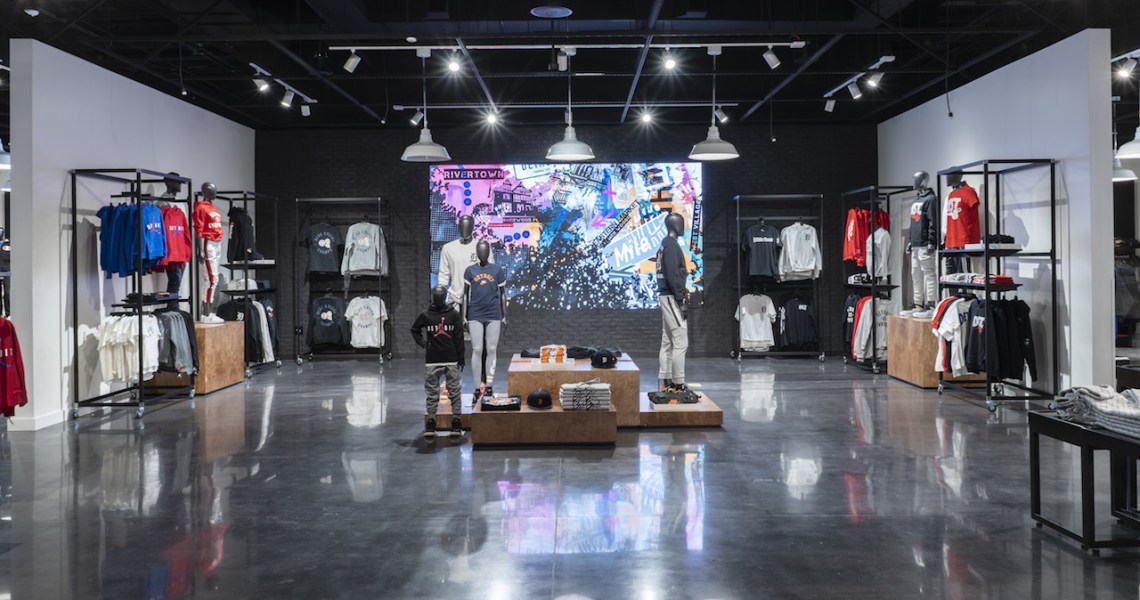For the latest Glossy+ Fashion Briefing, Jed Berger, CMO of Foot Locker, discussed why mall stores still make sense, who works best as a brand collaborator and why rare sneakers aren’t the only styles that fuel demand. Foot Locker reported first-quarter 2021 sales of $2.2 billion, up 83% year-over-year and an increase of 4% compared to 2019. During the quarter, the company opened 12 stores, remodeled or moved 15, and closed 58. It was operating nearly 3,000 stores in 27 countries, as of May 1.
How are you winning sneaker customers, considering the competition in the space?
The sneaker industry connects to so many aspects of culture: sports, music, art, fashion, purpose, technology and more. And the amazing thing is that it’s accessible. There’s incredible product at all price points. So as an industry, every [retailer] has their role, but we all just need to continue to be innovators and storytellers through great product, and we’re going to be OK.
So, how do you go about targeting your marketing efforts?
It’s a blend of art and science, and there is significant work in both. First and foremost, we try to build great ideas into the design of the product that we sell with our amazing community of [brand] partners. And we use our insights and rich data [on our shoppers] to work with our partners to create the product that we think they’ll want. While we very much cater to a youth culture mindset, I would have to emphasize the word “mindset.” Sneakers are a [form of] self-expression for [people] beyond an age[-specific] generation. You can’t really cut a segmentation by age in our world. You [instead] do it by passion points: Some people want to stand out a little bit more, and some people want their footwear to tell a story about what they stand for. [That’s why] there’s a data aspect to it, to make sure we’re sharing the stories with the people they’ll be relevant to.
Are traditional sneakerheads seeking rare styles your customer, too?
The [sneaker] industry is fueled by demand creation, and that doesn’t always mean a very tiny, limited assortment. We [recently] had a “Space Jam” collaboration with Nike, and we just did this incredible collaboration with Nike celebrating Ken Griffey Jr. Those weren’t tiny projects, but they were rich in storytelling, and they had the ability to be broader and create a wider demand. So it’s not that there’s a sneakerhead mentality, it’s just that there is a love for the product and a love for a rich idea. And I’d say the demand gets bigger and wider, depending on what that idea is — and so does the assortment, for the most part.
Who makes sense as a Foot Locker collaborator?
Some are connected to brands that we sell, but with some of them, we’re bringing them in to develop into their own brands and have their own relationship with our company. A couple that we’ve recently announced include Melody Ehsani, [founder of streetwear brand ME]. We named her the director of our women’s Foot Locker business, and we also launched her own brand within our space. It’s very clear that it belongs in sneaker culture, and the response has been amazing. We believe there’s a gap in product for women who love sneaker culture, and there are a lot of them. And Melody probably best represents that. We’re also working with Don C, who has a sportswear brand called Just Don. You’ll see us developing some work with him within Foot Locker’s walls. Both [collaborators] are synonymous with sneaker culture and even basketball culture.
Is your customer still shopping at the mall?
The learning and the demand creation is happening via mobile, digital and social. Where the purchase happens is everywhere, in all channels. We see [our] stores in malls as still being really relevant. Plus we have a really successful store format that we call our community [power] stores, where we are opening beautiful, localized stores — in Washington Heights, Philly, Detroit — that have more of an experiential touch to them. They’re really our best foot forward, in every aspect. In the stores, a lot of people still want to touch, feel, try on and [discover]. In the online environment, with sneakers, they’re often going directly to the product that they know they want. There are different behaviors, by channel, but we are completely channel-agnostic at this point.




